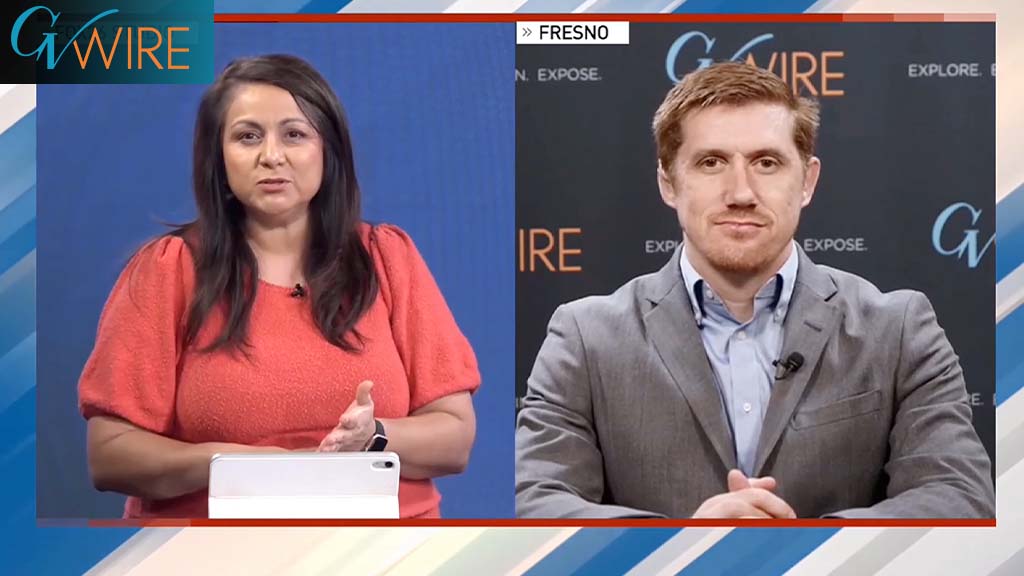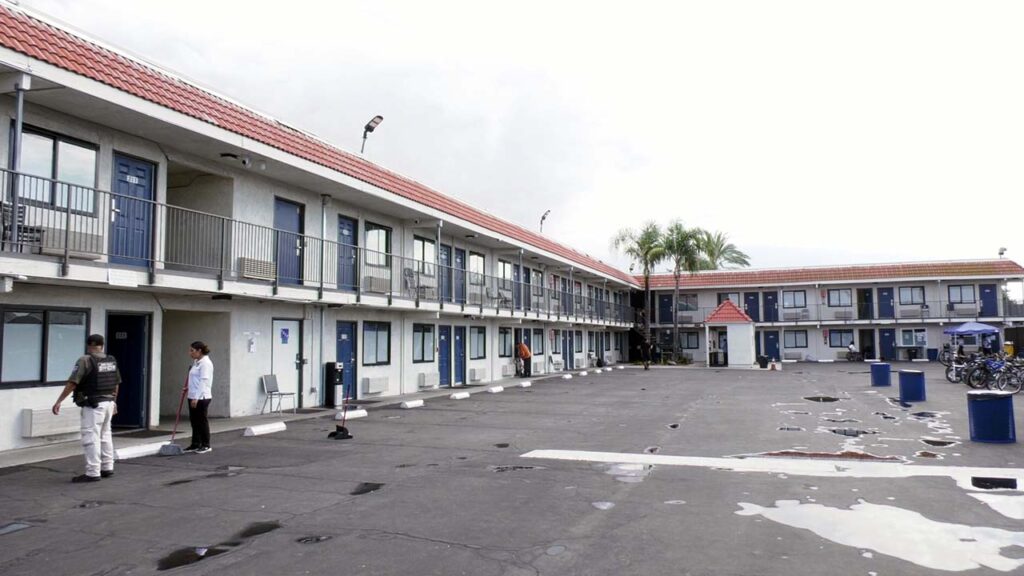The fires in January 2025 in Pacific Palisades and Altadena hit a housing market that was already reeling from high prices and scarcity. State officials said it seemed inevitable that some insurance companies will pull out of the housing market — making it much harder to build a home or get a mortgage — while others will raise already high rates. (AP File)

- There are rising signs that California is entering one of the most difficult periods in its history.
- Los Angeles is grappling with a $1 billion budget shortfall even before it confronts the challenge of rebuilding from the wildfires.
- “It’s much worse now than it was (in the 1990s), and it was pretty bad then. If things don’t change, I’m not optimistic,” says former governor Pete Wilson.
Share
|
Getting your Trinity Audio player ready...
|
LOS ANGELES — California eclipsed Japan in 2024 to become the fourth-largest economy in the world. Gov. Gavin Newsom announced earlier this month that the state’s population increased for the second year in a row. Tourism has hit record levels, as Los Angeles prepares to step onto the world stage as the host of the 2028 Summer Olympics.
But for all of that, there are rising signs that California is entering one of the most difficult periods in its history. The state is confronting what many leaders and officials say is an unprecedented confluence of forces — economic, political, social, environmental — that’s about to test its long record of resilience in the face of catastrophe, natural and otherwise.
Those population figures may prove to be a mirage. Analysts say the state’s population could well decline because of the wildfires that wiped out more than 6,000 homes in Los Angeles in January and because of the Trump administration’s immigration crackdown. Many young people are moving to other states to escape a housing shortage, leaving behind an aging population in a state that has long been a symbol of youth and energy.
Los Angeles, an economic engine for the state, is grappling with a $1 billion budget shortfall even before it confronts the challenge of rebuilding from the fires and the potential economic drain of preparing for the Olympics. Like San Francisco, it is struggling with an epidemic of homelessness on its sidewalks and downtown business districts that have been hollowed out by the COVID pandemic.
And at a time when the state is more vulnerable and more desperate for federal assistance after the fires, it seems unlikely California can look to Washington for help. President Donald Trump has been far more antagonistic toward the state than he was in his first term.
“California emerged from the Great Recession, when it was declared a dysfunctional, ungovernable state, as the world’s fifth-largest economy,” said Miriam Pawel, an author who has written extensively about California history and politics. “That said, California has never encountered this kind of adversarial, hostile relationship from the federal government, which creates a tremendous degree of uncertainty.”
Since the Gold Rush of 1848, California has been an American beacon of reinvention, creativity and opportunity. With its abundant natural resources, wealth and beauty, it has powered through disaster after disaster: the collapse of the defense and aerospace economy in the late 1980s, the Loma Prieta earthquake in San Francisco in 1989, the riots in Los Angeles in 1992.
Despite the Challenges, Some Are Optimistic
For all the signs of trouble, some California leaders say they remain optimistic.
“We have problems, we have challenges,” said Gray Davis, a Democrat who served as governor of California from 1999 to 2003. “We can overcome them. We’ll see the evidence of that over the next few years. I wouldn’t bet against California.”
Jerry Brown, a Democrat who served twice as California’s governor, said he has long been skeptical of stories in the media that declare that California’s best days are behind it. “I remember a Look magazine article talking about the same thing when my father was governor,” he said of Pat Brown, who was governor from 1959 to 1967.
Still, even Jerry Brown said the coming months and years would be difficult, marked by budget deficits, higher taxes, battles with the Trump administration and climate change.
“I think the wealth of California will allow for a basic and enduring resilience,” Brown said. “There will be cutbacks in LA and in a lot of places. The point is that it’s such a wealthy state that there’s a lot of room to adjust. But a lot of people are going to get hurt in the process.”
James Gallagher, the State Assembly’s Republican leader and a sixth-generation California rice farmer, said conditions in the state were as distressing as he could remember.
“Look, I’m a California optimist,” Gallagher said. “I do believe that we can turn this around. That’s always been the California dream: If you come out here, you can follow your dreams and make them come true. That is becoming less true.”

State Leadership at a Crossroads
At this moment of unease, the state’s political leadership finds itself at a crossroads. Over the next two years, there will be a new governor — Newsom is barred by term limits from seeking reelection — and what will likely be a hard-fought race to determine the next mayor of Los Angeles. Mayor Karen Bass is running for reelection and faces an electorate frustrated with her response to the fires. And Newsom has roiled members of his own party as he pivots from assailing the Trump administration to publicly criticizing Democrats and inviting Trump supporters to appear on his podcast.
Democrats here, like party members across the nation, are in a battle about the future direction of the party, amid evidence that it lost some voters by staking out positions that were too far to the left. Trump lost California in the 2024 presidential election, but he had a relatively strong showing in parts of the state, winning 10 counties that Joe Biden carried in 2020.
“We definitely need to reclaim the magic,” said Donna Bojarsky, a longtime civic leader and Democratic activist. “It’s not helpless, but it is Sisyphean. California does have particular challenges at this moment. It is different from what we faced before.”
Pete Wilson, a Republican, was governor from 1991 to 1999, a tenure that included the tail end of the collapse of the aerospace industry and a major earthquake. He said the state seemed in much tougher shape now, pointing to rising homelessness and struggling public schools.
“It’s much worse now than it was then, and it was pretty bad then,” Wilson said. “If things don’t change, I’m not optimistic.”
Trump Tries to Unravel State’s Progressive Policies
The biggest difference today, compared to the difficult chapters California has weathered since its founding in 1850, is the presence of a president who has expressed hostility toward the state. Trump and Washington Republicans have sought to unravel signature California policies and projects on auto emissions, electric vehicles, high-speed rail, and water and forest management.
Newsom, who is considering a run for president when his term as governor ends, has in recent days sought to push back on the notion of a struggling California. When the state announced that its population had increased by 108,000 in 2024, Newsom offered that statistic as a corrective to the notion — pushed by Republicans — that people were fleeing California.
Demographers have raised concerns about the population trends, even before the fires. Nearly 200,000 Californians between the age of 20 and 29 left the state between 2020 and 2023. And in recent years, film and television producers have headed for other states and nations, drawn by the promise of lower costs and tax breaks. By one count, 180,000 jobs in Hollywood, an industry that has long helped define California, have disappeared over the past three years.
Newsom boasted about last year’s new tourism numbers, but said that the number of international visitors this year was already beginning to fall because of tariffs, immigration restrictions and the increasingly fraught relationship between Trump and foreign governments. The state now projects a 9.2% decrease in international tourism for next year.
The fires in January in Pacific Palisades and Altadena hit a housing market that was already reeling from high prices and scarcity. State officials said it seemed inevitable that some insurance companies will pull out of the housing market — making it much harder to build a home or get a mortgage — while others will raise already high rates.
Brown has been one of California’s biggest boosters for nearly half a century. He said in an interview last week that he remains as confident about the future of the state today as he was when he saw the Look magazine article about California’s woes when his father was governor.
“Things move in California, and they change,” he said. “We lost aerospace, but we gained the Silicon Valley. California is still a force.”
This article originally appeared in The New York Times.
By Adam Nagourney/Mark Abramson
Orlando Mayorquín contributed reporting from Los Angeles.
c. 2025 The New York Times Company


















